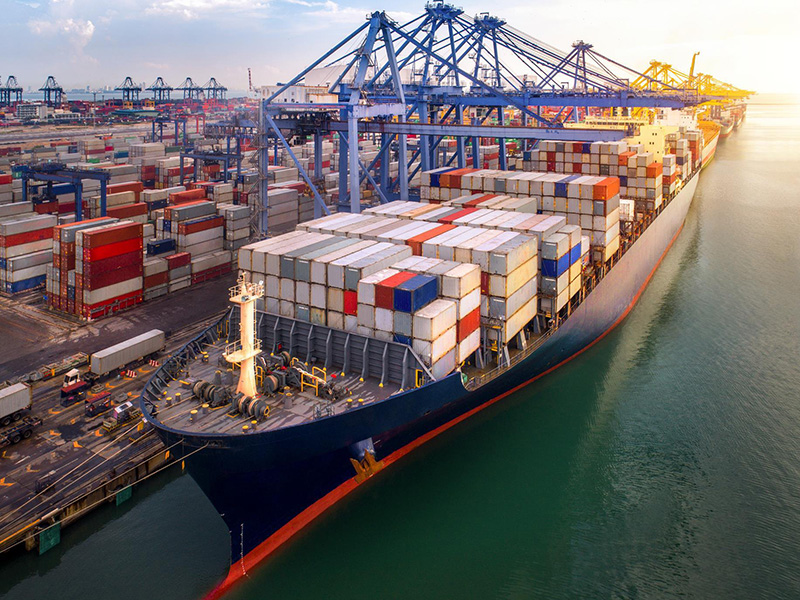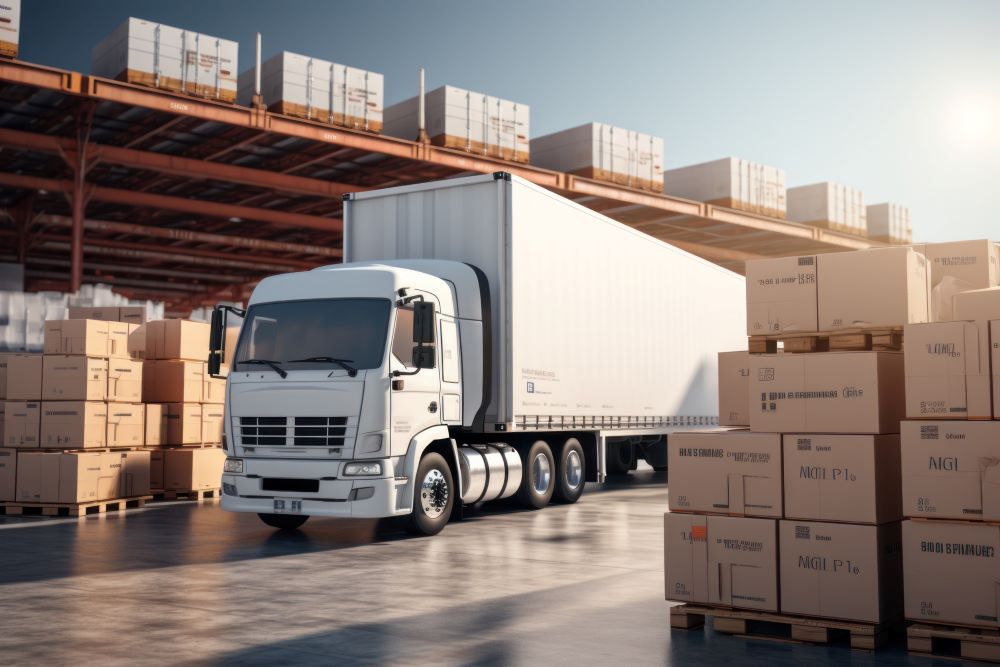- By Della tj
- November 3, 2025
- Door To Door, Shipping
Global exporters increasingly rely on the best door to door delivery from Shenzhen to France to ensure their goods arrive safely, on time, and with minimal hassle. Many face challenges such as unpredictable transit times, hidden shipping costs, and complex customs clearance — however, with a well-structured logistics plan you can overcome these hurdles and streamline your supply chain.
What Does “Best Door to Door Delivery from Shenzhen to France” Include?
Essentially, this service means your cargo is collected directly from your supplier’s location in Shenzhen, transported internationally, cleared through French customs, and delivered to your chosen destination — all managed by one logistics provider.
Key components include:
- Cargo pickup and export handling in Shenzhen
- Main-leg transport via sea, air, or rail freight
- Import customs clearance and duty/VAT settlement in France
- Final delivery to your warehouse, store, or customer
Moreover, professional forwarders provide door-to-door tracking, insurance, and customs documentation support, giving you complete visibility throughout the journey. This full-service approach ensures timely, compliant, and efficient delivery across the entire supply chain.
How Does the Door-to-Door Process Work?
A step-by-step workflow for the best door to door delivery from Shenzhen to France typically looks like this:
| Stage | Description |
|---|---|
| Pickup | Cargo collected from supplier’s Shenzhen factory or warehouse. |
| Export Customs | Export declaration filed with Chinese customs before departure. |
| Main Transport | Goods shipped via air, sea, or rail depending on priority. |
| Import Customs | Import clearance, duty calculation, and VAT payment in France. |
| Final Delivery | Last-mile transport to consignee’s door or customer location. |
Additionally, logistics companies may offer value-added services such as cargo consolidation, packaging, labeling, warehousing, or insurance coverage to protect your goods and reduce administrative stress.
What Are the Main Shipping Methods and Their Differences?
Choosing the right mode of transport significantly impacts shipping cost, transit time, and overall reliability. Below is a detailed comparison:
| Mode | Transit Time (Days) | Cost Range | Advantages | Disadvantages |
|---|---|---|---|---|
| Sea Freight (FCL/LCL) | 25–35 | $$ | Best for large shipments, low cost per unit | Longer lead time, weather delays possible |
| Air Freight | 5–10 | $$$ | Fast delivery, fewer touchpoints | Costly for heavy or bulky goods |
| Express Courier | 3–5 | $$$$ | Fastest, best for small parcels | Limited size, high cost |
| Rail Freight (via Eurasia) | 18–22 | $$$ | Balanced cost and time | Limited routes, capacity issues |
On the other hand, selecting the right option depends on factors such as shipment size, urgency, and budget. For instance, sea freight is ideal for bulk cargo, while air or express works best for urgent or lightweight items.
Typical Costs and Transit Times for Door-to-Door Delivery
Understanding cost and time expectations helps importers plan effectively. The table below shows average benchmarks:
| Shipment Type | Estimated Cost (USD) | Transit Time (Days) |
|---|---|---|
| Small parcel (0.5–5 kg, express) | 40–90 | 3–5 |
| Medium shipment (20–50 kg, air freight) | 350–650 | 6–10 |
| 20-ft container (sea freight FCL) | 1,900–2,600 | 25–30 |
| LCL shipment (per m³) | 120–160 | 30–35 |
Although rates fluctuate with fuel costs, seasons, and carrier capacity, door-to-door delivery remains predictable because all charges — including pickup, customs, and delivery — are quoted upfront. Consequently, this transparency helps importers calculate landed costs accurately.
Real-World Case Studies
Case 1: Electronic Components (Shenzhen → Paris)
Cargo: 200 kg electronics
Mode: Air freight door-to-door
Cost: USD 580
Transit Time: 6 days
Result: Delivered to Paris distribution center with customs cleared in 24 hours.
Case 2: Furniture (Shenzhen → Lyon)
Cargo: 1×40 ft container of home furniture
Mode: Sea freight door-to-door
Cost: USD 4,200
Transit Time: 28 days
Result: Delivered directly to Lyon warehouse, duties prepaid and cleared on arrival.
These examples demonstrate that selecting the best door to door delivery from Shenzhen to France ensures cost control, reliability, and full logistics transparency regardless of shipment type.
What Customs and Documents Are Required for France Imports?
When shipping internationally, customs clearance is a crucial stage. A missing or incorrect document can delay your shipment or incur penalties. The following checklist covers the essentials:
| Document | Purpose |
|---|---|
| Commercial Invoice | States value, description, and HS codes for customs duty calculation |
| Packing List | Provides weight, quantity, and package details |
| Bill of Lading / Air Waybill | Proof of shipment and transport contract |
| Certificate of Origin | Confirms production country for tariff determination |
| Import License (if required) | Needed for restricted goods (e.g., electronics, cosmetics) |
| EORI Number | Required for all importers into the EU |
| Customs Declaration | Legally registers the goods with French customs |
Indeed, accurate documentation speeds up both export and import processes. Moreover, using a logistics provider that handles documentation on your behalf ensures compliance and avoids costly errors.

Need a reliable logistics partner? Share your shipment details and we’ll provide a tailored quotation quickly and accurately.
How to Optimize Door-to-Door Delivery Efficiency
For importers seeking to improve performance and cost control, several strategies can help achieve the best results:
1. Consolidate Shipments
Combine multiple suppliers’ goods into one container to lower per-unit costs.
2. Book Early During Peak Seasons
Space shortages often occur during holiday or factory rush periods. Early booking ensures stability and better rates.
3. Choose Mode Wisely
Match freight mode with urgency: sea for bulk, air for urgency, express for samples.
4. Pre-Clear Customs
Submit documentation in advance to accelerate French customs processing.
5. Request Transparent Quotes
Ask for detailed cost breakdowns including pickup, clearance, and last-mile delivery to avoid surprises.
6. Track Shipments Proactively
Use tracking platforms for real-time visibility and updates throughout each shipping phase.
By following these optimization practices, you can reduce lead time, minimize costs, and enhance reliability — which is key when managing the best door to door delivery from Shenzhen to France.
Pros and Cons of Door-to-Door Delivery
While door-to-door delivery provides exceptional convenience, it’s essential to weigh its advantages and limitations:
| Advantages | Disadvantages |
|---|---|
| One contract covers the entire journey | Higher cost than port-to-port shipping |
| Minimal handling reduces risk of damage | Limited flexibility for last-minute changes |
| Simplified customs and documentation | Dependent on one logistics provider |
| Predictable delivery schedules | Possible delays in peak season |
| Better tracking and visibility | Slightly less cost-efficient for bulk cargo |
Overall, the benefits far outweigh the drawbacks for most importers who value time, transparency, and convenience.
Conclusion
To summarize, selecting the best door to door delivery from Shenzhen to France offers end-to-end control, simplified customs handling, and dependable transit times. Although the cost may be higher than port-to-port options, the efficiency, transparency, and peace of mind are worth the investment. Without a doubt, choosing a trusted forwarder ensures smooth logistics, consistent delivery performance, and sustainable growth in your international supply chain.
Request a Quote
Need a tailored solution for your shipping from China?Let TJ China Freight Forwarder assist you with reliable, cost-effective service.
FAQ:
Q1.What is the usual delivery time for door-to-door shipping from Shenzhen to France?
Depending on the mode, air freight takes 5–10 days, while sea freight usually takes 25–35 days door-to-door.
Q2.Can small parcels be sent via door-to-door service from Shenzhen to France?
Yes, small parcels can be shipped efficiently using express courier or air freight door-to-door delivery options.
Q3.How are customs duties and VAT handled for imports to France?
Duties and VAT are paid by the consignee or pre-paid by the forwarder under Delivered Duty Paid (DDP) terms.
Q4.What documents are needed for door-to-door shipments?
A commercial invoice, packing list, bill of lading, and certificate of origin are required for customs clearance.
Q5.Are there size or weight limits for door-to-door delivery?
No strict limits exist, but express and air modes have volumetric restrictions, while sea freight fits larger cargo.





